Designing the new south traffic control room at Roissy CDG
The DTI-DSNA project involved the design of new furniture for the six positions of the south traffic visual control room at Roissy Charles De Gaulle airport, positioning them in the best way, and the general layout of the control room itself, together with other furniture. Of the six positions, four were for VTS, one was for CDC (shift supervisor) and one was for Air France (AF). It was therefore a matter of designing three types of console within the budget set.
In addition, the customer wanted separate but identical furniture rather than the single row of units that was there before.
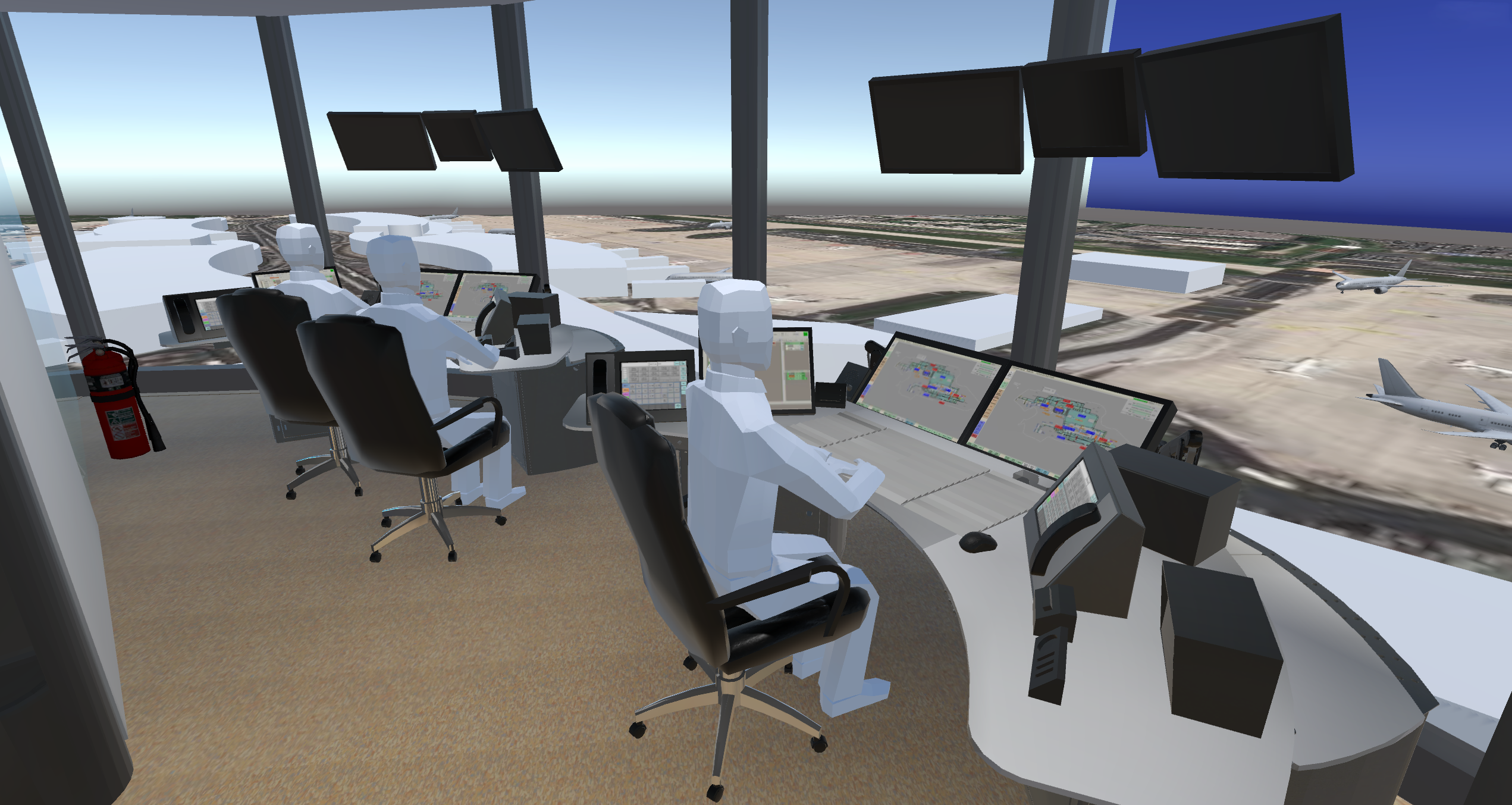
The challenges
In an air-traffic-control tower, the main challenge has to do with the need to be able to see outside, which creates constraints in terms both of the amount of light available and of visual obstructions. The screens had to be positioned in such a way that they did not obscure the essential elements and that they respected ergonomic standards.
To this general and common difficulty, the Roissy project added a three-phase development plan: the equipment is to be replaced gradually. It was therefore essential to come up with solutions that would make this gradual changeover possible.
Finally, the Roissy control tower allowed limited access in terms of space: the ultimate challenge was to design and implement a suitable layout for the furniture, so it could be transported to the operations control room. Tape measure in hand, Symbio's team walked, several times, the route the equipment would take to ensure that the dimensions were correct.
The results
Symbio’s mission began with a detailed inventory of the equipment needed on, and in, each type of console. The team then analysed the detailed characteristics of each piece of equipment, and assessed the frequency and extent of the operators' interactions with it.
Human-equipment interaction frequencies
Every piece of information is valuable and accurate: Symbio integrated them all into its VR SymLab tool, before initiating the spatial equipment layout activities for the three types of console (VTS, CDC, and AF). These configurations are always developed independently of the items of furniture, which are seen as current or future support and integration structures for the equipment.
The important thing at this stage of the design is to optimise the interaction between the operator and their equipment, taking account of physical accessibility and information-taking constraints. This information is displayed directly in SymLab. Additional physical-accessibility zones may also be included: in the figure below, the green zone indicates the fixed elbow-reach area, while the orange zone indicates the free elbow-reach area (with the arm extended).
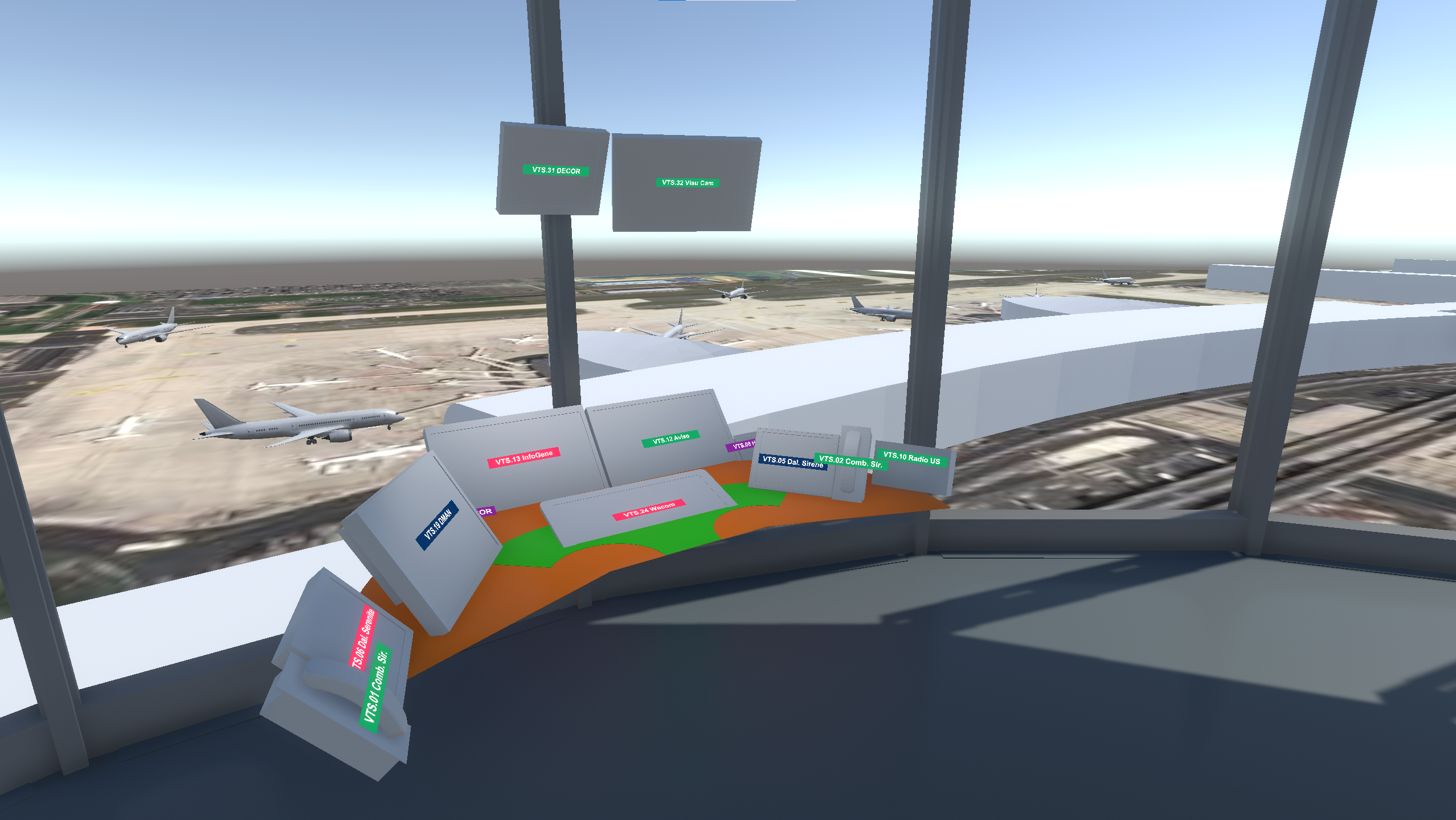
SymLab layout of the equipment for the typical future VTS station
The customer evaluated the first prototype layout in SymLab and modified the configuration directly where necessary: the DTI used virtual-reality goggles to work freely in SymLab in complete autonomy. The only thing left to do then was to exchange the configuration files with Symbio electronically.
Once the three equipment configurations have been settled on for the three typical positions, Symbio worked with the client to design the furniture that would integrate the equipment, on the worktop, the nose of the console, and in the technical cabinets. This constructive and thorough approach took into account the transport, assembly, and maintenance requirements of each element and their integration into the control tower itself. Three types of consoles (VTS, CDC, and AF) were defined in this way, together with a specification for their production.
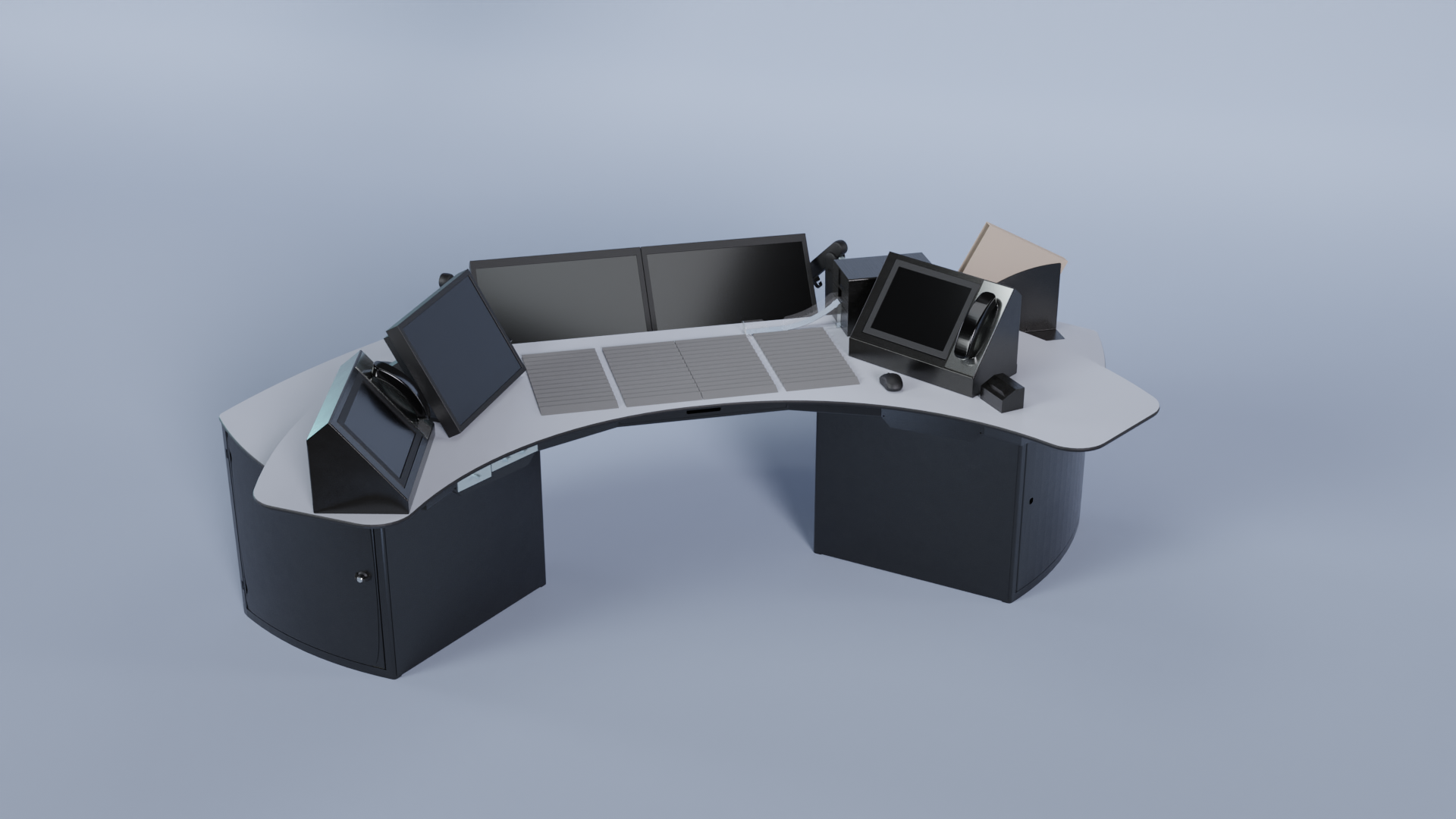
VTS console with its equipment
All that remained to be done was to place the consoles and other furniture elements in SymLab's virtual control tower, so that they could be precisely positioned according to which areas of the airport need to be monitored and the distances from the windows. Symbio carried out this fine-tuning with the customer. The result was a series of elegant, free-standing consoles that represent a clean break from the monolithic appearance of the previous furniture.
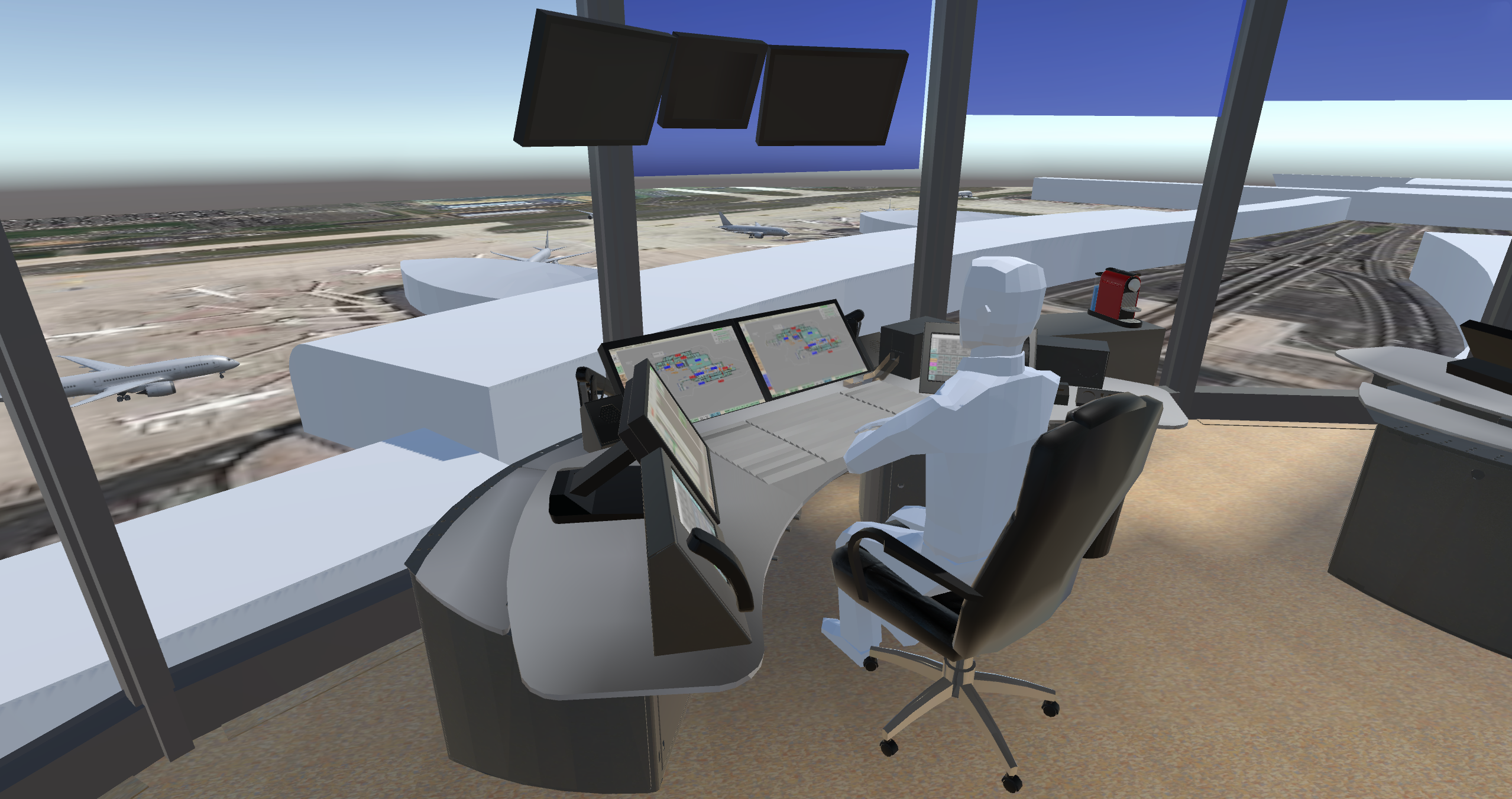
SymLab layout of the equipment on one of the three supervision stations
The final part of Symbio's assignment was to produce a prototype of the VTS console, to be installed at the customer's premises in Roissy. This operation allowed the technical and operational tests to be carried out, once the equipment had been installed on the worktop, the nose of the console, and in the technical boxes.
Prototype of the VTS console being equipped at the SNA/RP in Roissy
About the DTI
The Direction de la Technique et de l'Innovation (DTI) is a department of the French Ministère de la Transition Ecologique et Solidaire attached to the Direction des Services de la Navigation Aérienne (DSNA) and the Direction Générale de l'Aviation Civile. (DGAC).This department is responsible for defining, building and installing major air navigation systems and assisting air traffic control for the DSNA, which provides air traffic management services and other services.
About the DSNA
The Direction des Services de la Navigation Aérienne (DSNA) is the agency in charge of air traffic control, communication and information for France. It is a part of the Ministry of Sustainable Development and was created by decree in February 2005. The DSNA works in close coordination with its military counterpart, DIRCAM and since 2011 military controllers and civil controllers are being integrated into the same control centers using the same systems. DSNA is integrated into the Central European Functional Airspace Block (FABEC).
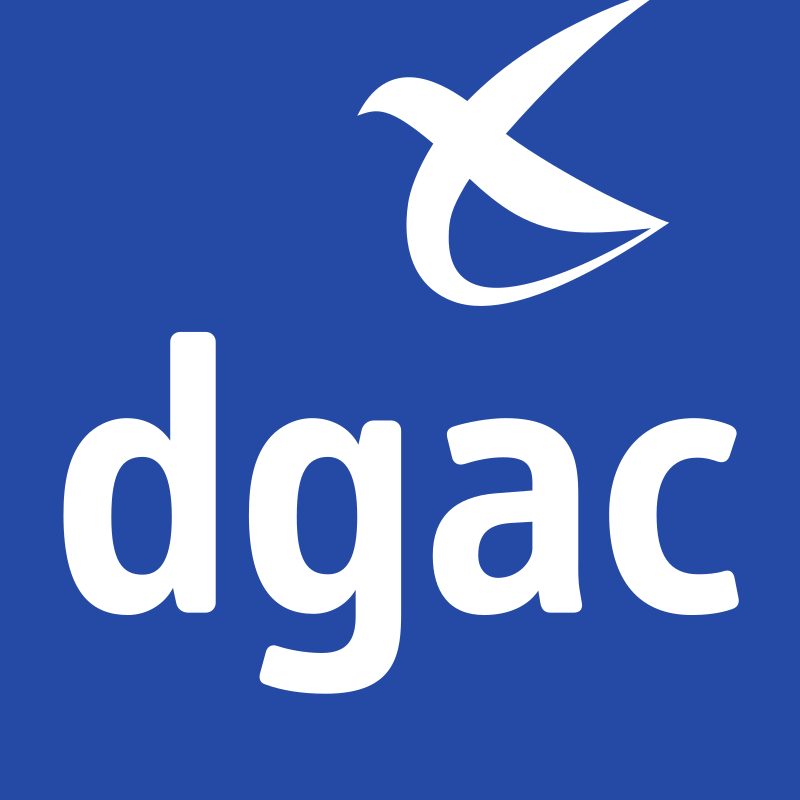
Share this:
